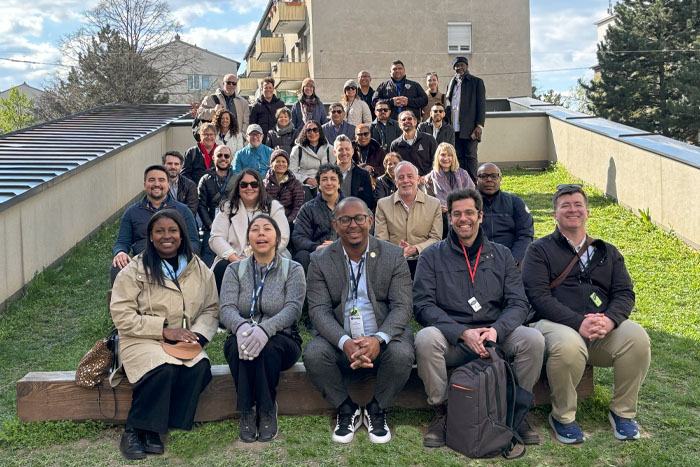NEWS & UPDATES
From the LeSar Portfolio of Firms
July 2025 Newsletter
Budget Proposals Continue to Destabilize Efforts to Address Housing Affordability and Homelessness
Since taking office this year, the Trump administration has destabilized efforts to address housing affordability and homelessness by proposing mass layoffs at HUD, selling or moving the HUD headquarters, [...]
California State Legislature Continues to Advance Bills to Produce Housing, Promote Equity, Protect Tenants, and more
Article Contributor: Jacqueline Woo, Manager, CA Legislative Analysis This year, California’s State Legislature is advancing a comprehensive suite of housing bills to boost housing production, protect tenants, create innovations [...]
California Fast Track Permit Reform Package Promises Further Housing Development Streamlining
In March, a bipartisan and bicameral group of legislators announced a comprehensive housing package to tackle California’s housing crisis. The package, dubbed the “Fast Track Housing Package,” includes more [...]
Sixth Vienna Social Housing Field Study Inspires Multisectoral Delegates to Continue Dialogue Back Home
In April, 31 delegates from Southern California, the Bay Area, and Virginia attended the 6th immersive Global Policy Leadership Academy (GPLA) Social Housing Field Study in Vienna, Austria. Attendees [...]
New Resources from the Climate Smart Housing Collective Advance Climate and Housing Work
Visit the CSHC website As climate change and housing remain top issues facing this country and globally, the most vulnerable communities are at the highest risk of being impacted [...]
What We’re Reading
REPORTS / RESOURCES
Cumulative Disadvantage in Hispanic Homeownership | Joint Center for Housing Studies of Harvard University | June 2025
Housing Opportunities: Governor’s Reorganization Plan to Create the California Housing and Homelessness Agency | Terner Center for Housing | June 2025
The Evolving Landscape of Social Housing in New England: What We Learned | Joint Center for Housing Studies of Harvard University | June 2025
Cuts to Climate, Energy Funding in House Bill Would Mean Higher Costs, Fewer Jobs, Poorer Health | Center on Budget and Policy Priorities | June 2025
A Costly Form of Displacement: Eviction from Mobile Home Parks | Eviction Lab | June 2025
ARTICLES/MEDIA
Homelessness Is Top of Mind for Many Californians. Why Does the Proposed Budget Eliminate Funding for It? | CalMatters | June 16, 2025
Could This City be the Model for How to Tackle the Housing Crisis and Climate Change? | NPR | June 15, 2025
Southern California’s 3.1% Inflation Remains Above Last Year’s Lows | San Diego Union-Tribune | June 12, 2025
Federal DEI, ‘Wokeness’ Restrictions Put California Homeless Providers in a Bind | CalMatters | June 12, 2025
New Homes with No Parking? LA City Council Considers Ending Parking Requirements | LAist | June 11, 2025
How A Wealthy Bay Area Town Is Gaming California’s Housing Mandates | SF Gate | June 9, 2025
App for Finding Homeless Shelter Beds Expands Throughout San Diego County | San Diego Union-Tribune | June 9, 2025
After Half a Century, California Legislators on the Verge of Overhauling a Landmark Environmental Law | LA Times | June 2, 2025
The Housing Market Was Supposed to Recover This Year. What Happened? | New York Times | June 2, 2025
L.A. Has 24,000 Tiny Vacant Lots Across the City—These Designs Show Creative Ways to Use Them for Housing | Fast Company | May 29, 2025






